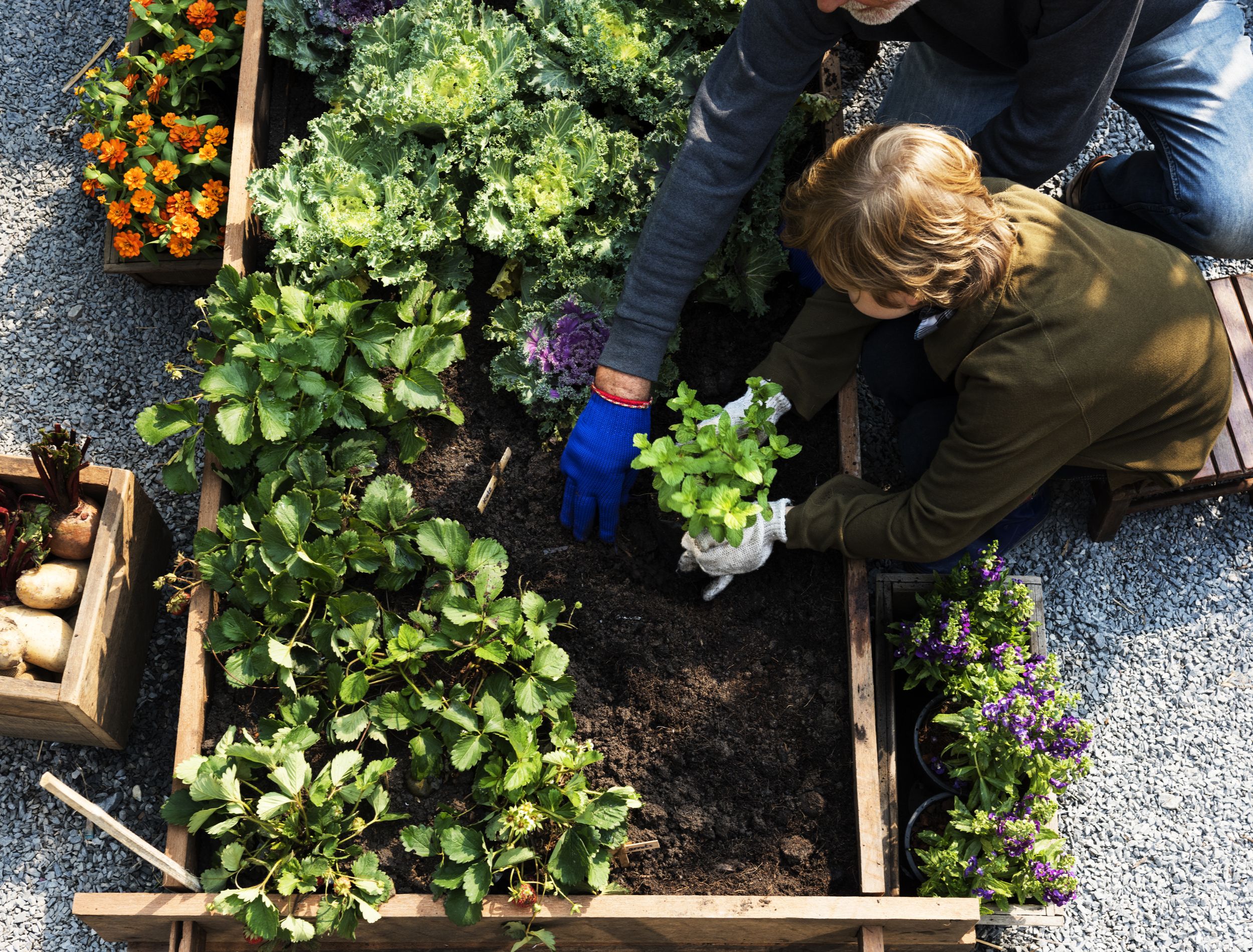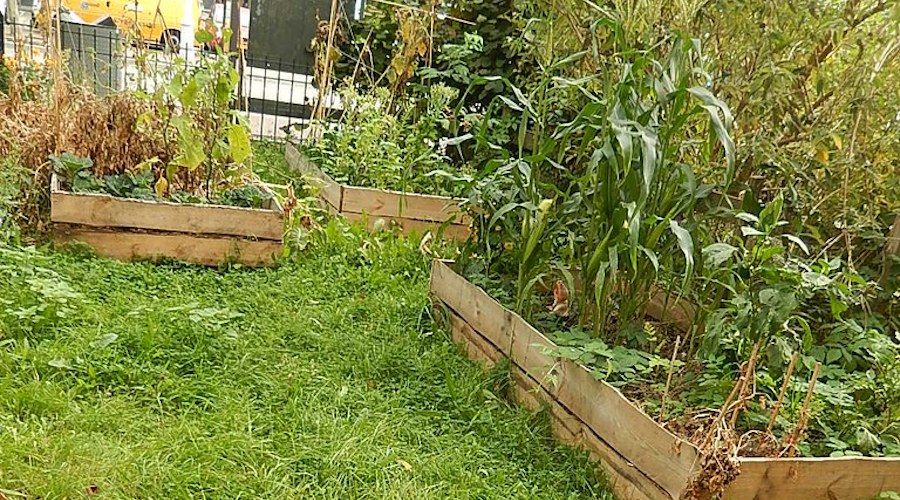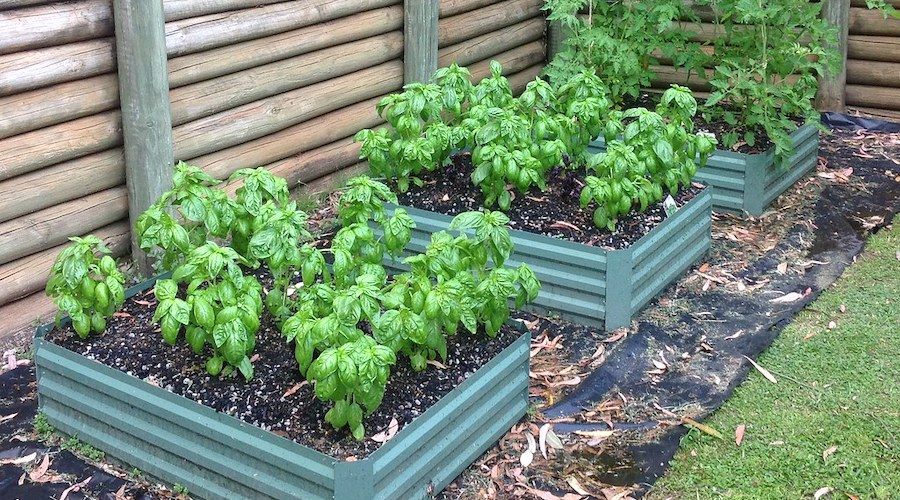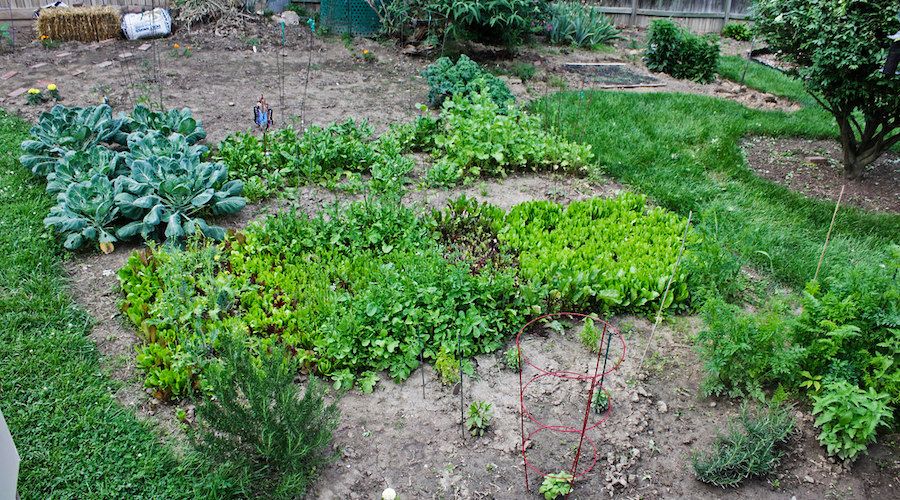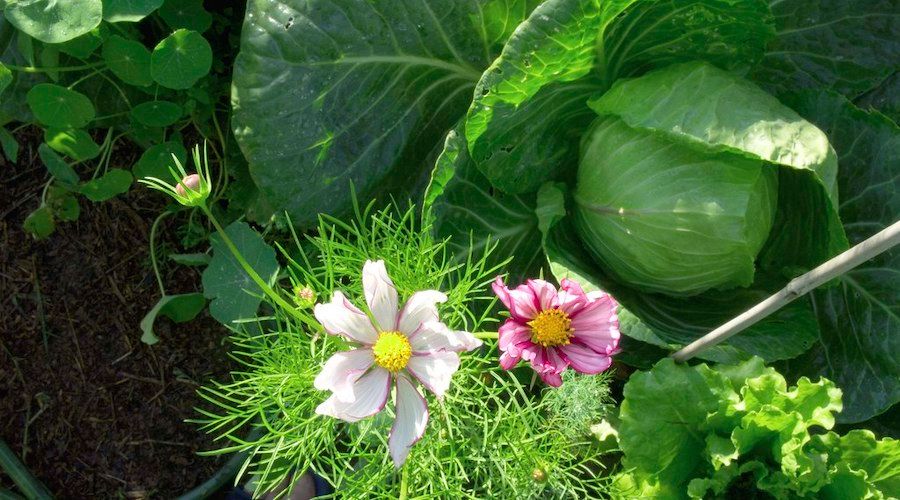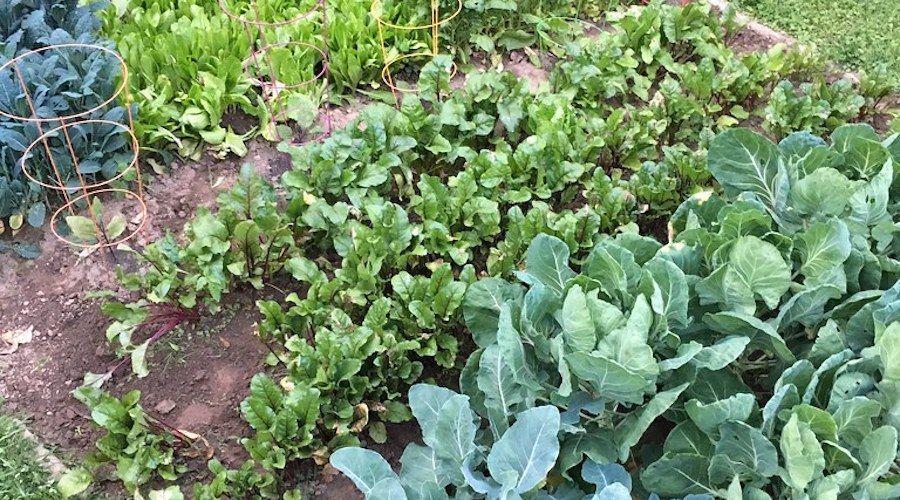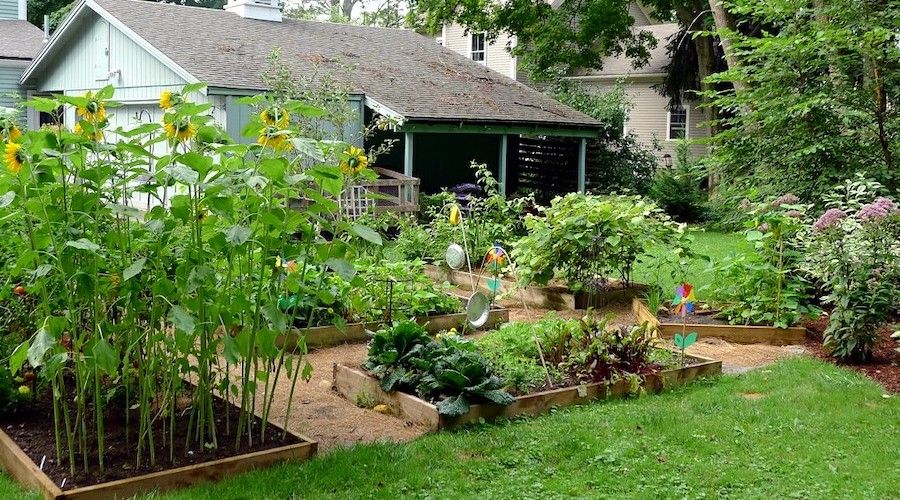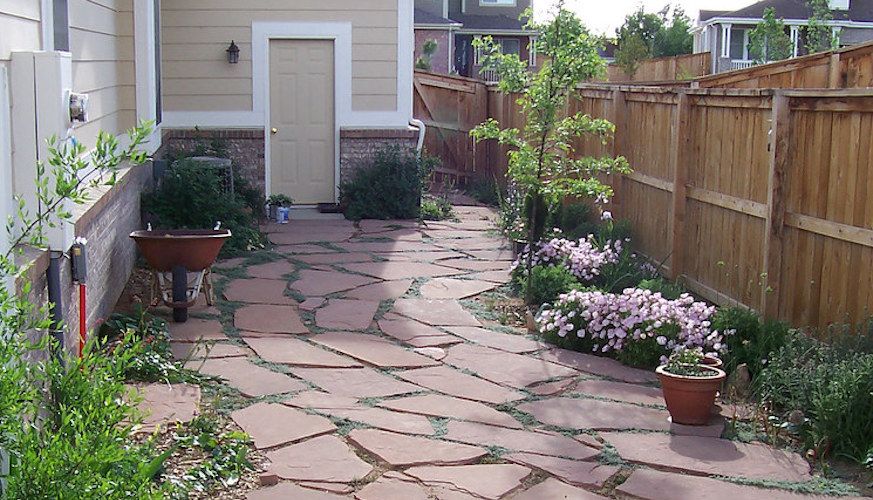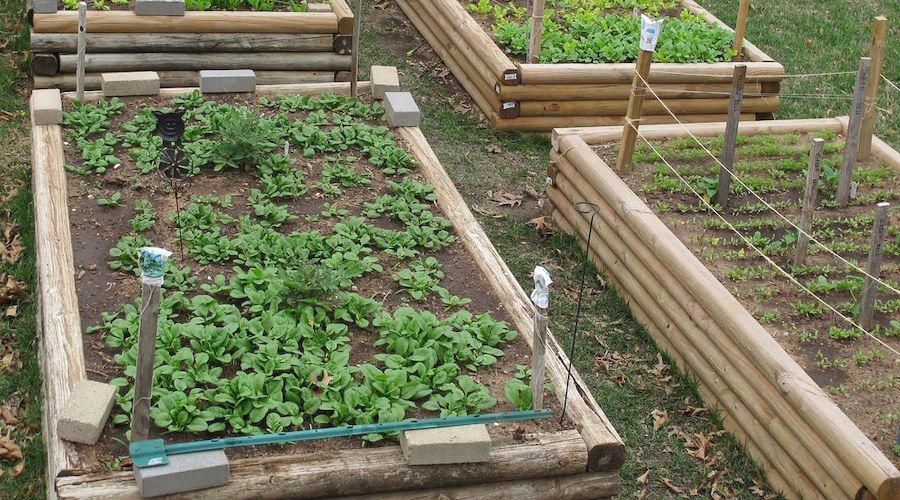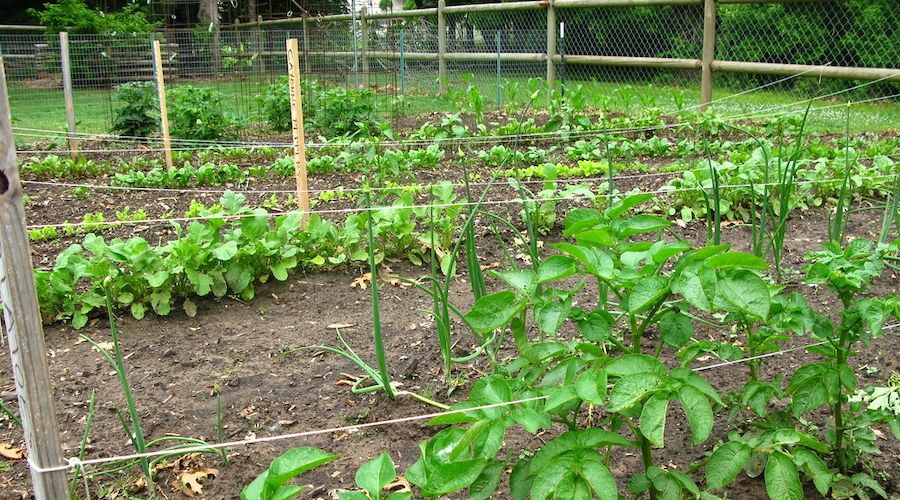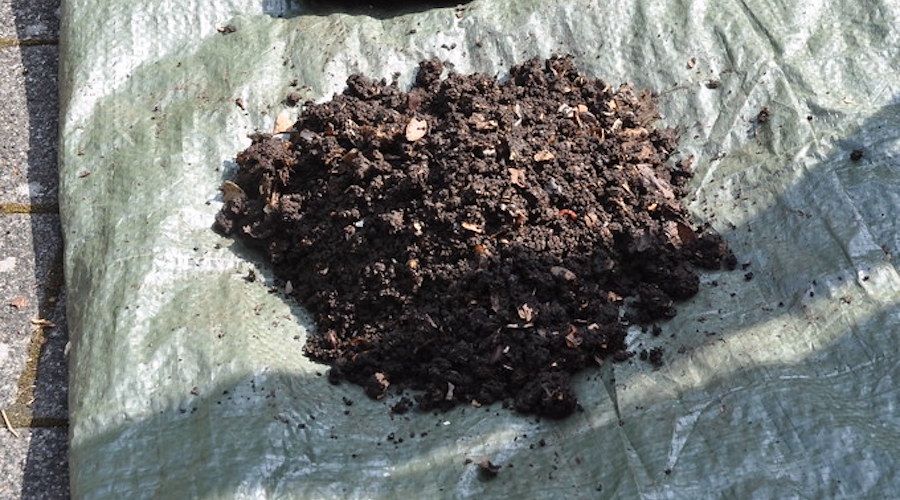Having the ideal vegetable garden is a goal that many of us have. And while it may be simple in words, in reality, it is very difficult to do. For your garden to thrive, you have to think about the soil quality, the fertilizers needed, the amounts and types of vegetables you will plant, and various other technicalities. As a beginner, whether it's an outdoor garden or an indoor vegetable garden, you also have to think about the looks.
This can prove to be a difficult task sometimes, as we primarily focus on the good health and plentiful yield of our plants. However, looks will also contribute to having the perfect vegetable garden. This is why we have collected some of the best backyard vegetable garden ideas for beginners.
15 Backyard Vegetable Garden Ideas for Beginners
1. Grow a Single Variety of a Vegetable
Image Credit: mikecogh via Creative Commons
There are many positives to this. The first pro is that your garden will look very uniform and beautiful at the same time. Moreover, monoculture farming can provide excellent yield maximization, increased productivity and efficiency, and is more easily managed. However, if you do wish to be self-sufficient and want to have a wide variety of veggies available, this is not going to be the best option for you.
2. Expanded Raised Garden Beds Will Help
Image Credit: Doug Beckers via Creative Commons
Raised garden beds have been becoming more and more popular and there are many good reasons for it. In the first place, raised beds allow you to plant your veggies even if your garden’s soil is of too poor quality. Moreover, they provide the ultimate balance between water drainage and retention. To top it off, they will give you the opportunity to highlight your best plants and will give your garden a very clean and tidy look.
3. Think About Having Vertical Gardens Near the Kitchen
If you want to have your veggies and herbs just one outstretched arm away, this is the best idea for you. Not only do these kinds of gardens bring a charm both to the inside and to the outside, but they are also incredibly practical. After all, you won’t need to go out to grab that tomato you needed for the salad. Moreover, a lot of vegetables require vertical support, so this vegetable garden idea is even more viable.
4. Get a Trellis for Climbing Vegetables
As mentioned before, a lot of vegetables will require vertical support. Trellises are a fantastic way to offer this. Whether you put them up against the wall of your home or decide that you want to set them up in some shape in your garden, you will have a magnificent result. Not only do they bring a very elegant vibe to your garden, but they are also very easy to put up and maintain. They come in all shapes and forms and, to be completely honest, my favorite is the honeycomb trellis. If you're more into DIY, you'll enjoy looking at these fantastic DIY garden trellis ideas for your backyard.
5. Grow Vegetables in Containers for Maximum Portability
Container gardening has always been a very popular choice, and it has been so because of multiple reasons. First and foremost, container gardening can ensure that you won’t need to transplant your plant since the container will be large enough for it. Moreover, these planters will be able to be moved around for optimal sun and rain exposure. With all that in mind, not only is container gardening a good idea in terms of providing the best for your plants, but it is also fantastic for arranging the perfect vegetable garden. That said, if you avoid common container gardening mistakes and learn how to plant a proper container garden, there are many foods you can grow in containers!
6. Grow Salad in a Designated Space
Image Credit: woodleywonderworks via Creative Commons
If you like to eat healthy food and are as big of a fan of salads, then this is the ideal choice for you. A salad garden can contain many veggies - tomatoes, lettuce, peas, carrots, cucumbers, etc and it is ideally 4ft x 4ft big. The best way to have a salad garden is by using a raised bed since this will provide the garden with the ideal water retention and drainage. Not to mention, who wouldn’t want the bragging rights to a salad that was entirely made out of their garden yield? Here's a cool article about how to build and care for a raised garden bed.
7. Grow Herbs in Mason Jars as a Vertical Garden
As a beginner, if you're looking to start an herb garden, know that herbs do not require a lot of space. Mason jars have made a comeback as an ideal home decoration tool. If you combine both, you have a lovely idea for a vertical DIY mason jar garden. It will bring a unique and rustic vibe to your backyard, while at the same time providing a fantastic environment for the herbs to grow. It is very space-efficient, easy to move and maintain and it will definitely make people’s heads turn. If you are wondering how exactly to make one yourself, you can find a tutorial here.
8. Growing Homemade Salsa Is Possible
Image credits: Kwangmoozaa via Canva
This is a must for all salsa lovers. As with the salad garden, the optimal way to grow these veggies is by making a 4x4 ft raised bed. There are a few different plant configurations that will all yield similar results, but will enhance the welcoming and homey vibe your garden gives out. For a guide on how to make your own salsa garden, here's a fantastic tutorial to help you plant a salsa garden.
9. Plant Vegetables Amid Edible Flowers to Boost Pollination
Image Credit: Annabeaull via Creative Commons
Mixing flowers and veggies together can be a fantastic move., but there are some plants you should never grow together. That said, if mixed right, flowers will bring in natural beauty, but they will also contribute by attracting a lot of pollinators. This, in turn, will cause a higher nectar production, which will end up attracting even more beneficial insects. They will help with pollination and yield boost.
10. Know Your Companion Plants
Image Credit: woodleywonderworks via Creative Commons
Companion planting can help tremendously with the increase of yield and quality. Unfortunately, if you do not know what plants go together, you may end up having a plant that will bully the others, which will cause a much lower quality garden. However, if done right, it will boost your productivity. Here's a fantastic companion planting guide you can look at when planning your garden.
11. Plant Tall Veggies on the North Side of Your Garden
Image Credit: Lori L. Stalteri via Creative Commons
The layout of a garden is extremely important since even one misplaced plant can turn your backyard around for the worst. One of the key needs for plants is sunlight, and any obstruction to it can have catastrophic consequences. This is why you should make sure that you plant all your tall veggies on the north side of your garden. This way, you ensure that shorter plants are not in the shade and are receiving enough sunlight.
12. Provide Perennials with a Permanent Spot in Your Garden
Image Credit: patrick_standish via Creative Commons
One of the biggest advantages of having perennials in your garden is the fact that they can improve the soil tremendously. They enhance the soil biodiversity and will help with making water available to plants. Moreover, they will bring a lovely and colorful charm to your garden. That said, avoid these common perennial garden mistakes for beautiful blooms and a healthy garden.
13. Stagger Planting to Have a Bountiful Supply of Vegetables
Image Credit: OakleyOriginals via Creative Commons
Stagger planting is a very good technique when you are looking to ensure long-term veggie availability. It consists of planting a few seeds every 2-3 weeks. This way, the plants will mature at different times and you will have veggies for much longer.
14. Construct Fence and/or Nets to Keep Critters and Animals Away
Image Credit: OakleyOriginals via Creative Commons
Keeping the critters away is almost as important as fertilizing and watering your vegetables. They can deal a lot of damage to your plants and crops within a very short amount of time. Luckily, a lot of stores can offer you numerous options when it comes to fences and nets that will ensure that the critters cannot come close to your crops. There are so many models, types, and makes that there’s no doubt that you will find one to serve your need and fit your style. If you're more into DIY, here are some super easy DIY garden fence ideas for your backyard. If you have dogs, you'll want to learn how to stop them from digging under the fence to keep your garden safe!
15. Learn to Refresh Potting Soil to Cut Down on Costs
Image credits: sacratomato_hr via Creative Commons
Let’s be honest - potting soil can be expensive. Especially if you are doing some large-scale gardening. This is why it is a very good idea to learn how to refresh your potting soil. This will help you cut down on costs significantly, while at the same time allowing you to stay on the eco-friendly path.
In Summary
So there you have it! These are 15 fantastic backyard vegetable garden ideas for beginners. Not only are they not hard to do, but they can also be very beneficial to your garden. Hopefully, we’ve managed to inspire you!
Happy Gardening!

